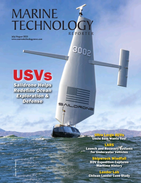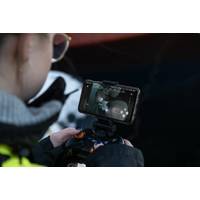
Too Much Information
at Cornell University, is one of the researchers to win funding. Gomes is researching current AI limitations for scientific discovery and decision-making by combining symbolic reasoning, deep learning and optimization for high-dimensional reasoning.Yejin Choi, incoming professor and senior fellow, Stanford University, is another researcher who won funding. Choi develops algorithms so that AI can mimic human values systems.Our quest for information has led us to this point.Where will it take us next?David Autor, economics professor at MIT, wants to know. He is another researcher who won Schmidt Sciences

Schmidt Sciences Fosters AI Research
.The 2024 AI2050 senior fellows include:● David Autor, economics professor, co-director of the Shaping the Future of Work Initiative, MIT, researches how people interact with new AI tools and how AI will shape employment and income in the future.● Yejin Choi, incoming professor and senior fellow, Stanford University, develops algorithms, benchmarks and metrics for AI to reflect multiple human value systems and preferences, suitable for a pluralistic world.● Carla Gomes, computing and information science professor, director of the Institute for Computational Sustainability, Cornell University, addresses

Academia’s Climate Change Challenge is Far from Academic
changing climate? What other trends can be observed across the marine industry and what innovative technologies can make positive change?Shedding light on the twilight zoneResearchers at Woods Hole Oceanographic Institution (WHOI), in collaboration with Monterey Bay Aquarium Research Institute and Stanford University, have begun addressing this question by seeking to understand how marine creatures transport carbon dioxide to the deep sea, one of the world’s largest carbon sinks. An underwater robot by the name Mesobot is providing scientists with insight into the twilight zone, a vast mid-ocean
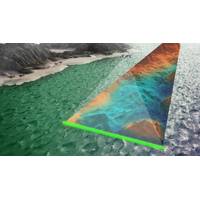
Lidar Helps to illuminate the Future of Oceans
remained a fascinating mission for humankind with most of our oceans remaining unexplored, despite technological advancements, due to crushing pressures, freezing temperatures, and pitch-black darkness. One tactic to overcoming these limitations, however, may use more than just lidar.Engineers at Stanford University have developed an aerial solution for underwater imaging by combining light and sound, each filling in the gaps created by the other. Electromagnetic radia-tion (such as visual light, microwave, and radar signals) loses energy when passing from the air to the water and vice versa; soundwaves

Hacking 4 Environment: Oceans - Creating Entrepreneurs from Scientists and Students
Mission-Driven EntrepreneursHacking for the Environment: Oceans and Hacking 4 Oceans are the latest in a series of mission-driven entrepreneurship courses that have students across the country thinking differently about how to solve real-world problems.The course series launched in 2016 at Stanford University with Hacking for Defense (H4D) -- the idea of Steve Blank, creator of the Lean Startup movement; and (Ret) Army Colonels Joe Felter and Peter Newell, who had identified a need for national security innovation at speed. They hypothesized that graduate students could use Lean Startup principles
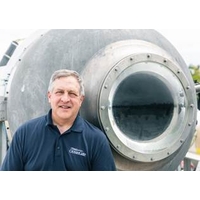
OceanGate Names Shuman COO
strategic account relationships with both public and private organizations.Shuman has been awarded a patent for an Indoor Distributed Microcell. He received a Bachelor of Science degree in Mechanical Engineering from Tufts University and a Master of Science degree in Mechanical Engineering from Stanford University
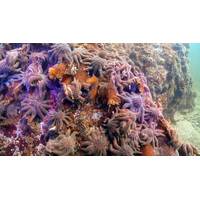
Study: Sunflower Sea Star Population in Peril
. This cascading effect has a really big impact.”For this research, “Disease Epidemic and a Marine Heat Wave Are Associated with the Continental-Scale Collapse of a Pivotal Predator (Pycnopodia Helianthoides),” the other partner institutions were Simon Fraser University, Stanford University, Hakai Institute and the National Oceanic and Atmospheric Administration (NOAA).Between 2006 and 2017, scientists and trained citizen scientists with Reef Environmental Education Foundation (REEF) conducted 10,956 roving-diver surveys from Southern California to Alaska. Before 2013, divers
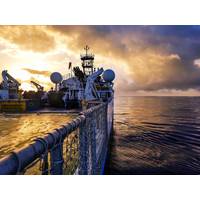
Ten Institutes Join the Nereus Program
. New partners include: University of Wollongong (Australia) Harvard University (USA) University of Washington (USA) Arizona State University (USA) University of South Carolina (USA) Agrocampus Ouest (France) Monterey Bay Aquarium (USA) Stanford University (USA) University of Ottawa (Canada) Swiss Federal Institute of Technology Zurich (ETH Zurich, Switzerland) Rutgers University (USA) They will engage in research such as regional fisheries policy, social responsibility of seafood, science communication, up-welling
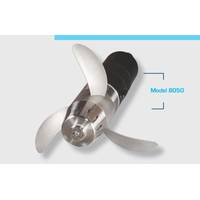
SoCal Tech Focus: Tecnadyne
to name a few) use Tecnadyne thrusters on their vehicles. Tecnadyne products are presently being used on thousands of vehicles throughout the world, operated by many offshore oil service companies, universities and research institutions. Recent customers include Woods Hole Oceanographic Institute, Stanford University, University of Washington APL, Lockheed-Martin, Boeing, GE Nuclear, Oceaneering International, Mitsui Engineering & Shipbuilding, L-3 and Electric Boat. Tecnadyne has recently focused its attention on the growing AUV market and the need for higher efficiency thrusters. AUV specific
 August 2025
August 2025


